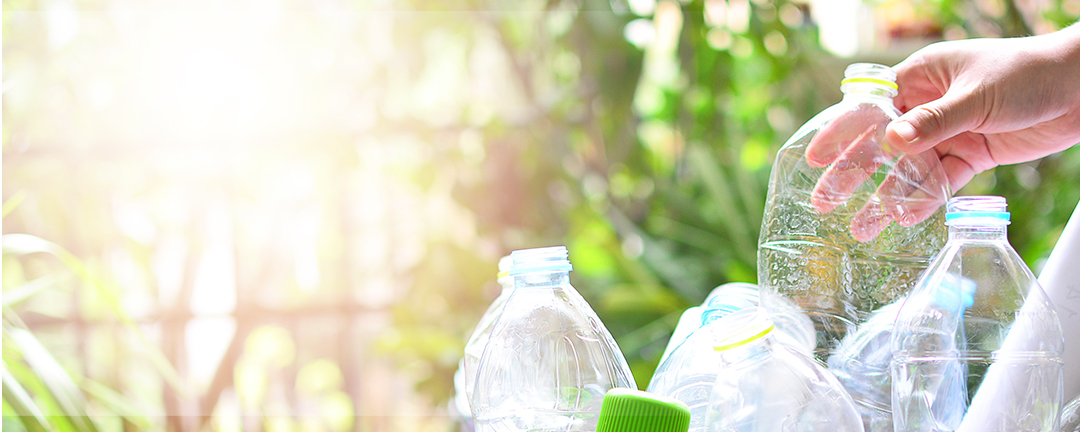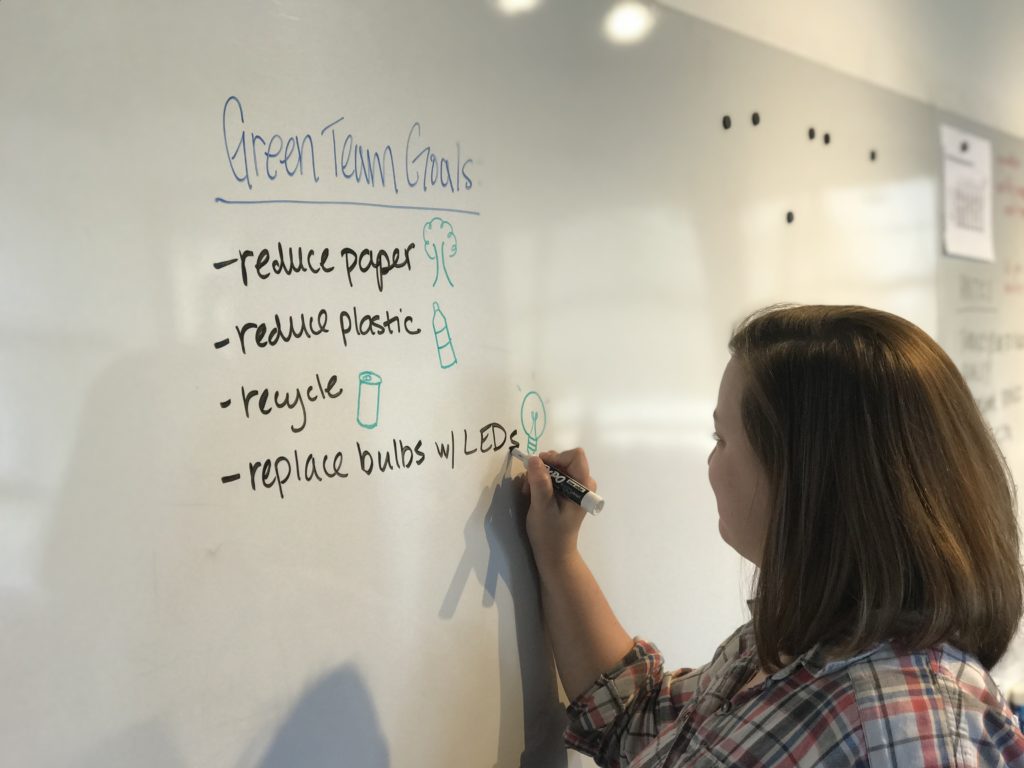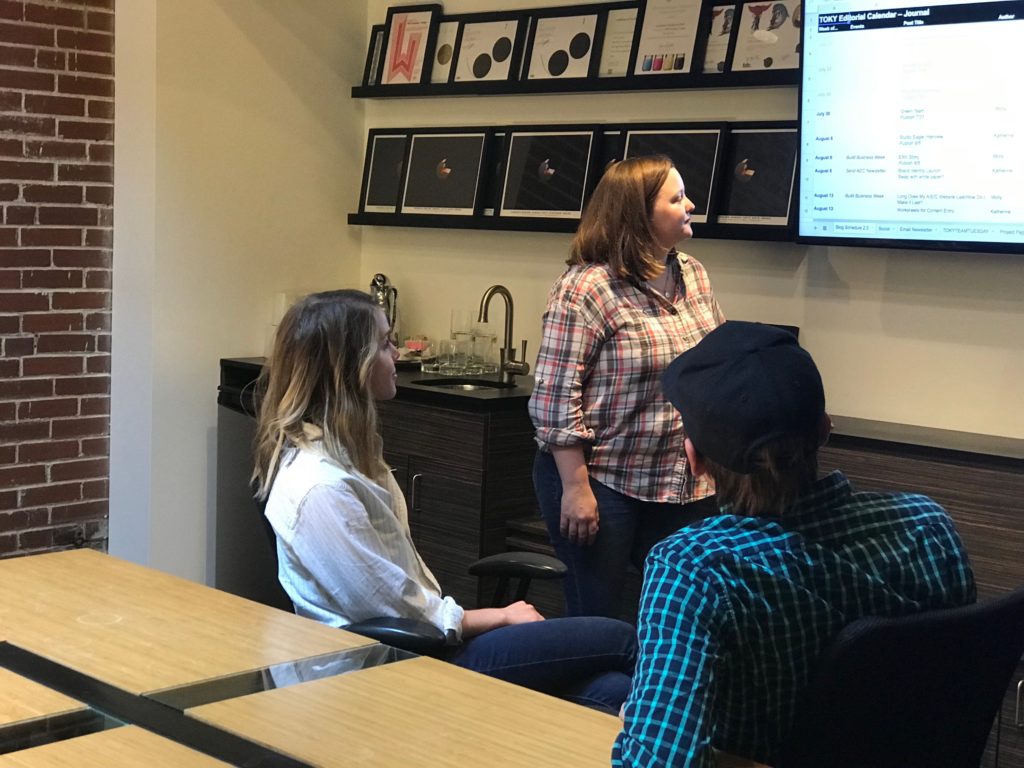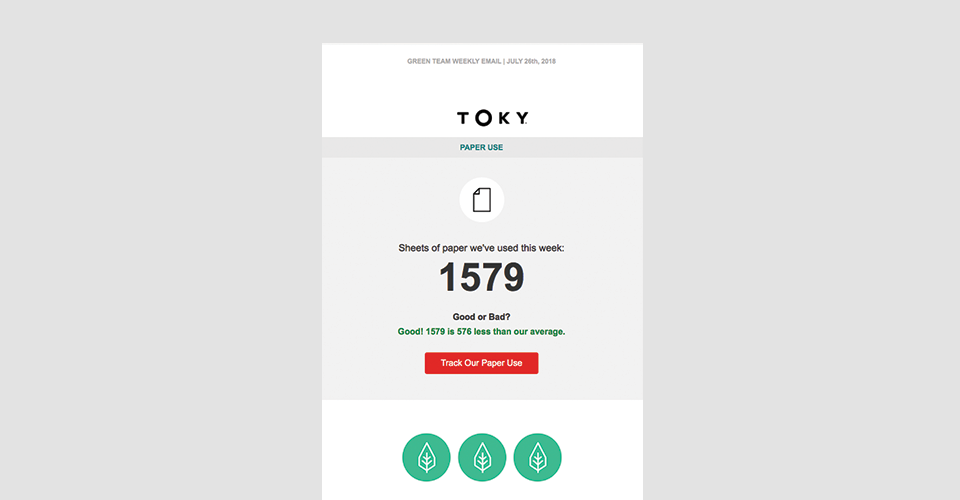Going Green: Your Roadmap to a More Sustainable Office

Humans have spent centuries modifying our world to fit our needs. It comes at a cost. Our actions directly affect the natural landscape, other species, and the global ecosystem that supports us all.
No one person can fix the litany of issues humans have created in our environment, but collectively we can make a difference by instituting small changes. Businesses tend to have a large carbon footprint. That means your team has the potential to make a difference by changing everyday habits.
Since April of 2018, TOKY has been participating in the Green Business Challenge, in which we strive to meet important benchmarks to operate more sustainably. We’ve learned a lot, and we’d like to share that learning to help others make their offices more green.
Step 1: Assemble a Green Team
The best way to focus your team on changing everyday habits is to start with a small group that’s passionate about going greener. Assemble a few coworkers who have expressed interest in an office-wide green challenge and brainstorm ways to influence the larger team. The group should meet regularly (at a pace that works for your office) to assess progress toward stated goals.

Step 2: Create Goals
Speaking of goals, your green team should outline specific, measurable goals and communicate those to the larger group. Start by asking the team what your office could potentially use less of on a day-to-day basis. You might consider:
- Paper, especially for printing
- Paper products in bathrooms
- Plastic coffee cups
- Plastic water bottles
- Soda cans
- Electricity
Old habits die hard. Don’t try to eliminate or significantly cut use right off the bat; aim for a week-by-week reduction in use that will build over time. Before long, good habits will become permanent and make room for new ones.

Step 3: Cut Down Paper Use
Determine how much paper your office is using on a weekly basis (your printer probably keeps that information stored). Is it possible to conduct some meetings without any paper presentation copies? Are there certain clients that would react favorably to the suggestion of digital-only presentations? Unless it’s totally necessary, challenge yourself not to hit print and to conduct the majority of your work via screen.
Action items for cutting down paper use:
- Track weekly paper printing and strive to print a little less each week
- Encourage your team to conduct digital-only presentations and paper-free meetings when possible
- Switch to recycled paper products in your restrooms

Step 4: Reduce Plastic Use
At current rate, by 2050 there will be more plastic than fish in the world’s oceans. From your morning coffee run to the water bottle you grab during a meeting to the to-go container from the deli, you’re probably using more plastic than you realize.
A few suggestions for cutting plastic use:
- Replace plastic water bottles on hand for meetings and interviews with a sleek pitcher and modern glassware
- Provide your team with reusable to-go coffee mugs; almost any coffee shop will fill a reusable mug, and most will even knock a few cents off the price
- Carry tupperware for any lunch meeting leftovers to avoid paper, plastic, or styrofoam containers

Step 5: Use Less Energy
Most offices have computers and electronics running all day long. On a national scale, being more efficient can reduce our reliance on expensive fuel, lower greenhouse gases, and even reduce our electricity bills.
A few suggestions for your office:
- Replace all the light bulbs in your office with LEDs (which use up to 75% less energy)
- Make sure the last one to leave turns off all lights
- Encourage the team to turn their computers off overnight and on weekends
Step 6: Recycle it Right
Not every city recycles materials the same way or accepts all recyclable materials. In fact, one wrong item can send the whole batch to the landfill instead. In a single-stream system, for example, the recycling service processes all the materials without sorting, so it’s important to know what can’t go in the bin.
To be better recyclers, we suggest you:
- Do your research on what can and can’t be recycled in your city
- Move your recycling bins closer to the trash cans so they stay top-of-mind
- Hang a sign above the bins for a quick reminder of what can’t be recycled
Step 7: Send Out a Regular Green Team Email
Keep your team in the know on progress so they continue to feel committed to new habits. Send out a weekly or monthly email with your paper count and an article from the web with a new sustainability tip. You might even consider including feedback or ideas from a coworker to show enthusiasm.

—
Read more about the St. Louis Green Business Challenge here.